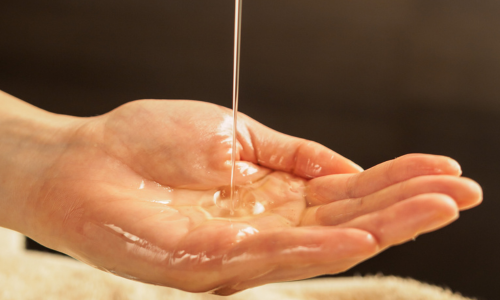
Massage Techniques You Can Do at Home Using Massage Oil
In today’s fast-paced world, self-care has never been more essential. Whether you’re dealing with stress, muscle tension, or just want to unwind after a long day, massage can be a powerful tool to help you relax and rejuvenate. While going to a professional masseuse is wonderful, there’s a lot you can do right in the comfort of your own home.
With just a bit of massage oil and some basic techniques, you can give yourself or your loved one a soothing, effective massage. In this guide, we’ll explore different massage techniques you can do at home, how to use massage oils properly, and how to create the perfect environment for your at-home massage experience.
Choosing the Right Massage Oil
Before diving into the techniques, it's important to select the right kind of massage oil. Massage oils help your hands glide smoothly over the skin and can enhance the experience with aromatherapy and skin-nourishing properties.
Preparing the Space
Creating the right environment is key to a successful home massage.
Clean the area: Use a clean, flat surface such as a bed, couch, yoga mat, or even a padded floor area.
Set the mood: Dim the lights, light some candles, or use soft lighting. Play calming music or nature sounds in the background.
Crank up the heat: Make sure the room is warm enough since the person receiving the massage will likely be partially undressed.
Use towels or blankets: Lay one down to avoid oil stains and have another ready to cover the parts of the body you’re not massaging to keep warm.
Basic Massage Techniques
Here are foundational techniques that can be applied to various areas of the body.
1. Effleurage (Gliding Strokes)
This is usually the first and last technique in a massage session.
How to do it: Use the whole palm of your hand to make long, gentle, sweeping strokes.
Pressure: Light to medium.
Purpose: Warms up the muscles, spreads the oil, and promotes relaxation.
2. Petrissage (Kneading)
This technique mimics kneading dough and is great for deeper muscle tension.
How to do it: Gently lift, roll, and squeeze the muscles between your fingers and thumbs.
Pressure: Medium to firm.
Purpose: Increases circulation and relieves tightness.
3. Friction
A more intense technique used on specific tight areas.
How to do it: Use your fingertips or thumbs to make small, circular movements over knots or tension points.
Pressure: Firm.
Purpose: Breaks up adhesions and improves mobility.
4. Tapotement (Percussion)
This rhythmic tapping or drumming motion stimulates the muscles.
How to do it: Use the edge of your hands, cupped palms, or fingertips to gently tap or “karate chop” the area.
Pressure: Light to medium.
Purpose: Invigorating and can wake up tired muscles.
Self-Massage Techniques
Massages are best when someone else can do the heavy lifting, and you are able to relax - but not everyone has that option! Massaging yourself can be surprisingly effective, especially for everyday stress and muscle aches. Here are some simple self-massage techniques using oil.
Neck and Shoulders
Warm some oil in your hands.
Use your fingertips and thumbs to knead the base of your neck, moving up toward your skull.
Apply pressure in circular motions along the tops of your shoulders.
Use your knuckles to press and roll over the trapezius muscles.
Arms and Hands
Apply oil to one arm at a time.
Use long strokes from wrist to shoulder.
Use your thumb to apply deeper pressure in a circular motion on your biceps and forearms.
For hands, knead the palm and stretch the fingers gently, one at a time.
Legs and Feet
Apply oil starting at your ankles and move upward.
Use both hands to knead your calves and thighs with medium pressure.
Focus on areas of tightness by using your thumbs in a circular motion.
Massage your feet by pressing into the arches and heels, using your thumbs and knuckles.
Partner Massage Techniques
Giving a massage to your partner can be an intimate and relaxing shared experience. Here are some areas to focus on:
Back Massage
Warm the oil in your hands and begin with effleurage strokes from the lower back up to the shoulders.
Use your thumbs to make circular motions along the spine and shoulder blades (never directly on the spine).
Use kneading (petrissage) to work the muscles along the sides of the spine and shoulders.
Use your knuckles or palms for deeper pressure if needed.
Finish with lighter effleurage strokes to calm and soothe.
Neck and Head Massage
Apply just a small amount of oil or skip it for the scalp.
Use your fingertips to make small circles at the base of the skull.
Gently massage behind the ears and along the neck.
For the scalp, use light fingertip pressure and gentle tugging motions through the hair.
Foot Massage
Apply oil and begin with long, smooth strokes over the top and bottom of the foot.
Use your thumbs to press into the sole, arch, and heel.
Gently stretch and rotate each toe.
Finish with a calming squeeze of the whole foot using both hands.
Tips for a Great Home Massage Experience
Communicate: Ask your partner or yourself how the pressure feels—everyone’s preferences are different.
Go slow: Don’t rush the process. Gentle, mindful strokes are more effective than fast movements.
Use enough oil: But not so much that your hands slip uncontrollably. Add more as needed.
Breathe deeply: Encourage relaxation with deep, slow breathing throughout the session.
Stay hydrated: After a massage, it’s good to drink water to help flush out toxins.
When to Avoid Massage
While massage is generally safe, avoid it under these conditions:
Open wounds or bruises
Skin infections or rashes
Recent surgeries or injuries
Severe varicose veins
Blood clots or deep vein thrombosis (DVT)
Fever or illness
Always consult a healthcare professional if you're unsure whether massage is appropriate.
Massage is a beautiful, healing practice that doesn’t require fancy equipment or professional training to be effective. With just a bit of massage oil and a gentle, mindful touch, you can bring significant relaxation and relief to yourself or someone you care about. From simple neck rubs to full-body sessions, at-home massage offers a deeply rewarding way to slow down, reconnect, and care for your body.
So the next time you feel stressed, sore, or in need of a little TLC, reach for your favorite massage oil and try out these techniques. Your body and mind will thank you.













